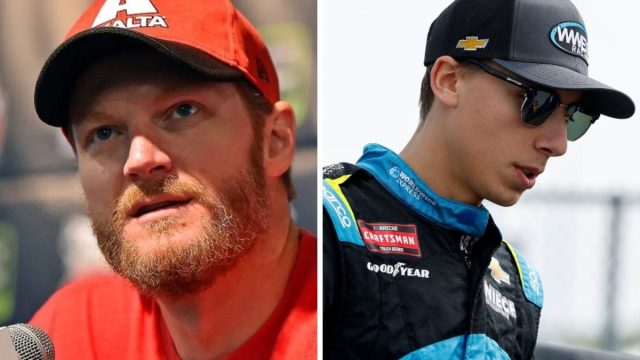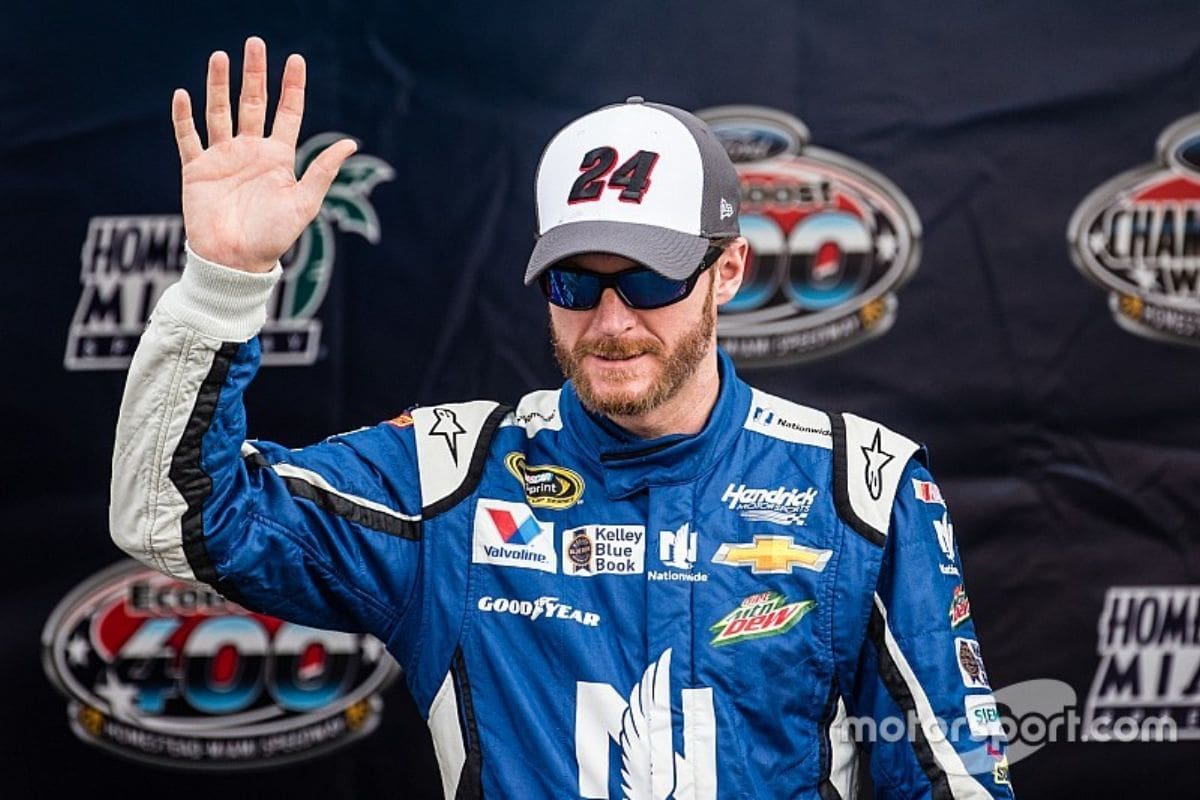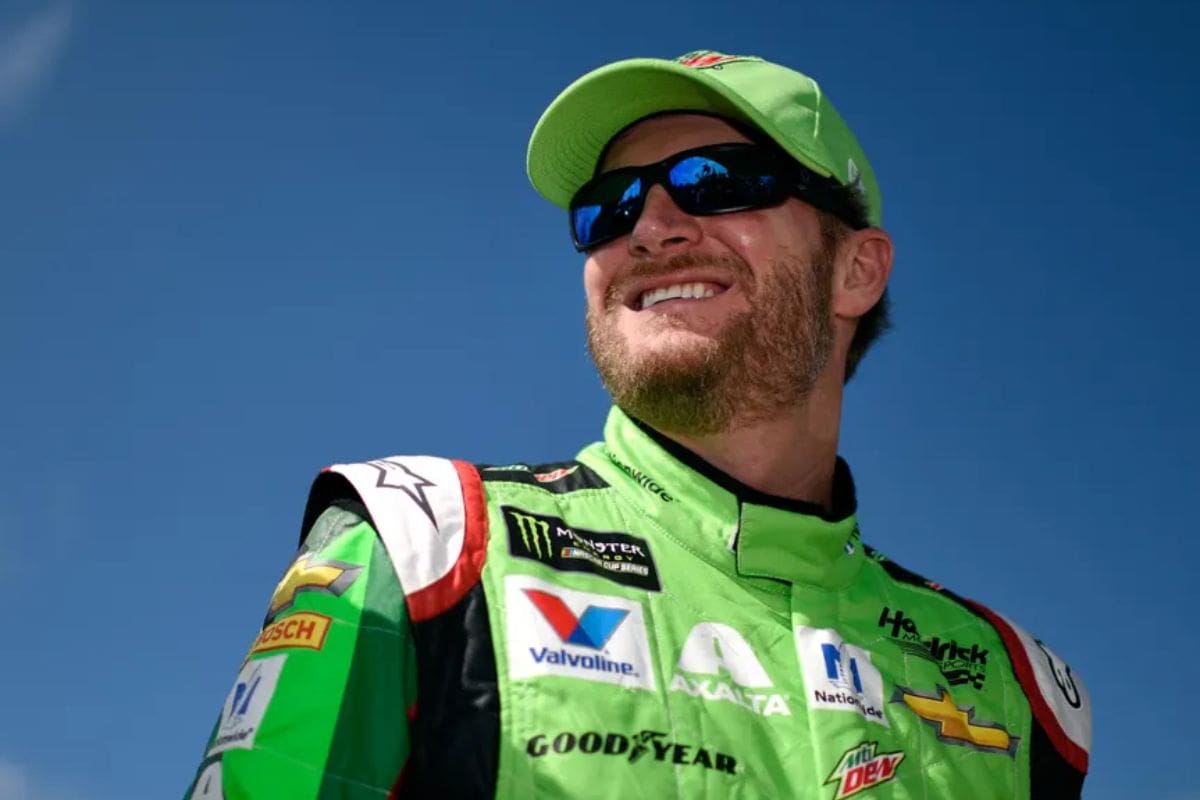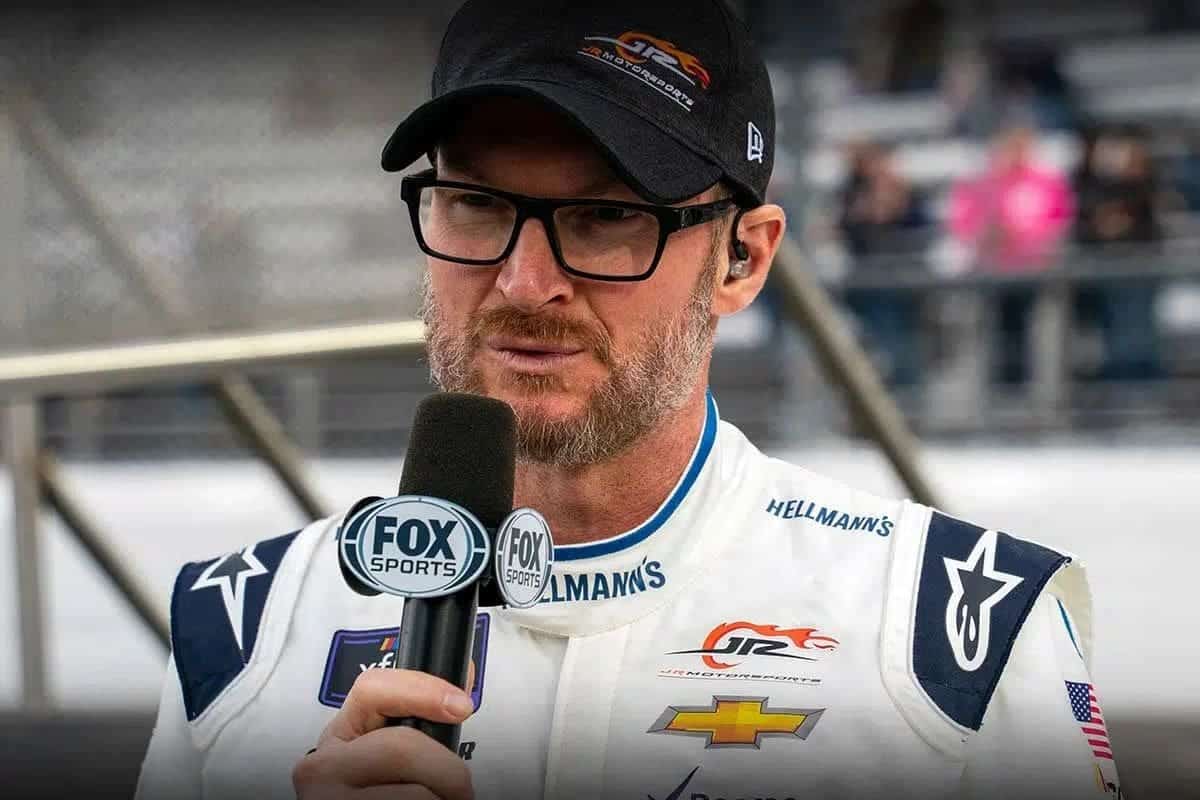Dale Jr. Blames Cup Star: The recent incident involving Carson Hocevar has sparked a compelling discourse, particularly with Dale Earnhardt Jr. attributing some blame to the dynamics between Cup stars and emerging drivers. While Hocevar’s role in the event cannot be overlooked, Earnhardt Jr. emphasizes that actions by experienced drivers, such as Harrison Burton’s abrupt deceleration, can notably impact the behavior of less seasoned competitors. This perspective urges a reevaluation of how veteran drivers’ decisions influence on-track incidents and raises questions about the broader implications for NASCAR’s regulatory and community responses.
Key Highlights
- Dale Earnhardt Jr. acknowledges Hocevar’s fault but also notes Burton’s sudden slowing as a contributing factor.
- Earnhardt Jr. points out the complexities of racing environments impacting driver behavior.
- He hints at potential pre-existing tension between Carson Hocevar and Harrison Burton.
- Earnhardt Jr. suggests a deeper understanding of on-track incidents is necessary.
- He emphasizes the need for perspective on racing incidents beyond just penalizing drivers.
Incident Overview and NASCAR’s Response
During the Nashville Superspeedway race, Carson Hocevar’s action that resulted in Harrison Burton’s spin-out led to NASCAR imposing a strict penalty of 25 points and a $50,000 fine, highlighting the governing body’s dedication to maintaining on-track discipline. This incident emphasizes the seriousness with which NASCAR views driver conduct and serves as a clear message to all competitors about the repercussions of aggressive driving.
Hocevar, driving for Spire Motorsports, faced significant backlash for his action, which many perceived as reckless and detrimental to the integrity of the race. The decision to penalize Hocevar with both a points deduction and a substantial monetary fine reflects NASCAR’s firm stance on ensuring that the sport remains competitive yet fair.
By deducting 25 points, NASCAR directly impacts Hocevar’s standing in the championship, potentially affecting his season-long aspirations. This punitive measure is designed to act as a deterrent, discouraging similar actions in future events.
The $50,000 fine also highlights the financial consequences of such behavior, serving as a substantial hit to both Hocevar and his team. This financial penalty is significant enough to underscore that teams and drivers think twice before engaging in actions that could lead to similar outcomes.
Dale Earnhardt Jr’s Perspective
Dale Earnhardt Jr.’s viewpoint on the incident provides a balanced evaluation, acknowledging Hocevar’s fault while also suggesting that Harrison Burton’s sudden slowing down may have worsened the situation. Earnhardt Jr. acknowledged that Hocevar’s actions under caution were the main cause of the collision, a point that aligns with NASCAR’s stance on driver responsibility during such periods. However, he refrained from placing sole blame on Hocevar, instead highlighting the potential impact of Burton’s unexpected deceleration.
“Hocevar did not have to turn Harrison around, he’s wrong for doing that, he’s wrong for doing it under caution especially. Harrison slowed down really abruptly. Did y’all kind of notice that? It was like Harrison was slowing.” – Dale Jr
By taking into account Burton’s sudden slowing down, Earnhardt Jr. sheds light on the complexities that often go unnoticed in racing environments. Such actions, while within the rules, can create unpredictable scenarios that test the reflexes and decision-making abilities of trailing drivers. Earnhardt Jr.’s comments suggest that Burton’s actions, whether deliberate or not, contributed to the series of events leading to the collision.
“I don’t know if Harrison was just like ‘Hey I’m slowing down because the cautions out’ but he kind of reduced his speed a lot quicker than the other cars around him at least. It was like he was mad as well before he gets spun out, it seemed just judging by some body language out of the driving of the cars. It was like something went on between them two guys and they were both annoyed with each other.” – Dale Jr
Moreover, Earnhardt Jr.’s analysis implies the potential existence of pre-existing tension between Hocevar and Burton. Such tension, if present, could have influenced their on-track behavior, adding another layer of intricacy to the incident. By addressing this potential underlying issue, Earnhardt Jr. highlights the multifaceted nature of racing dynamics and the importance of understanding the broader context in which incidents occur.
Essentially, Earnhardt Jr. advocates for a more in-depth examination of the factors at play, urging NASCAR and its drivers to think not just immediate actions, but also the situational challenges and interpersonal dynamics that shape racing incidents. His perspective serves as a call for a more subtle approach to incident analysis, one that goes beyond assigning blame to creating a deeper understanding of the sport’s intricate realities.
History of Incidents and Reputational Impact
Carson Hocevar’s penalty at Nashville is the latest in a string of on-track incidents that have tarnished his reputation and raised questions about his consistency and decision-making behind the wheel. His repeated involvement in contentious racing activities has sparked scrutiny from both fans and industry experts, who argue that his aggressive driving style may be detrimental to his career longevity and competitive standing.
Hocevar’s history of on-track transgressions is well-documented, with previous penalties in the NASCAR Truck Series and other racing events highlighting a pattern of behavior that many believe warrants stricter disciplinary action. The reluctance to suspend Hocevar, despite his recurrent infractions, has fueled debate within the racing community about the adequacy of NASCAR’s penalty system and its effectiveness in curbing reckless driving.
The reputational impact of these incidents cannot be overstated. Consistency and decision-making are critical drivers’ attributes, and Hocevar’s track record has cast a shadow over his professional image. Sponsors and team owners may reconsider their associations, apprehensive about the potential for negative publicity and the financial repercussions of being linked to a driver frequently embroiled in controversy.
Moreover, Hocevar’s peers in the racing circuit may view him with increased skepticism, potentially impacting collaborative efforts on the track. Trust and mutual respect are paramount in a sport where split-second decisions can mean the difference between victory and disaster.
Comparison to Previous NASCAR Actions
Analyzing NASCAR’s handling of Carson Hocevar’s penalties reveals notable disparities when compared to disciplinary actions in similar past incidents. The discrepancies in NASCAR’s punitive measures have sparked a debate among fans and pundits, questioning the fairness and uniformity of the ruling body’s decisions.
Historically, NASCAR has faced criticism for its subjective approach to penalties. A closer examination of previous cases highlights significant variations in the severity of sanctions for comparable infractions. The Hocevar incident, where he faced relatively lenient consequences, is a poignant example illustrating these disparities.
- Case of Matt Kenseth (2015): Kenseth was suspended for two races after intentionally wrecking Joey Logano, a move widely seen as retaliation. This firm response contrasts sharply with the penalties given to Hocevar.
- Kyle Busch (2011): Busch was parked for a weekend after deliberately crashing Ron Hornaday Jr. in a Truck Series race. This decision highlights NASCAR’s capacity for more stringent punishment in earlier incidents.
- Johnny Sauter (2019): Sauter received a one-race suspension for ramming Austin Hill during a caution period. The parallels between this incident and Hocevar’s actions emphasize the disparities in disciplinary measures.
- Jeff Gordon (2012): Gordon was fined $100,000 and docked 25 points for wrecking Clint Bowyer in a deliberate act of retribution. No suspension was given, yet the financial and points penalties were substantial.
- Tony Stewart (2013): Stewart faced no suspension for an on-track altercation with Joey Logano, highlighting even more inconsistency in how similar actions are judged.
Future Implications and Community Response
The fallout from the Carson Hocevar incident has sparked a broader conversation about the need for more consistent and strict implementation of NASCAR’s disciplinary policies to ensure equitable competition. This event has divided fans and highlighted the crucial requirement for NASCAR to reassess and potentially revamp its current regulatory framework.
Many argue that Hocevar’s penalty was long overdue, seeing it as a vital step toward curbing reckless driving behaviors that undermine the integrity of the sport. However, the central question remains: Are the existing penalties adequate to deter such actions, or do they simply act as a temporary obstacle? The community’s split response reveals a deeper issue within NASCAR’s disciplinary system, exposing a potential gap between rule enforcement and the changing landscape of competitive driving.
The incident has also sparked significant discussions among stakeholders, including drivers, team owners, and analysts, about the role of enforcement in upholding a fair playing field. Some suggest that stricter penalties could discourage drivers from participating in risky actions, promoting a safer and more just racing environment. On the other hand, some caution against excessively harsh measures that could suppress the competitive drive that characterizes NASCAR.
Future implications are diverse. Improved regulatory measures could result in a more foreseeable and transparent system, thereby boosting the credibility of the sport. However, NASCAR must carefully balance the requirement for rigorous enforcement with the preservation of its competitive spirit. The community’s reaction, marked by a blend of support and doubt, mirrors the challenge of striking this balance.
News in Brief: Dale Jr. Blames Cup Stars
The Carson Hocevar incident, as highlighted by Dale Earnhardt Jr., emphasizes the complex dynamics between experienced Cup stars and up-and-coming drivers within NASCAR.
While acknowledging Hocevar’s mistake, Earnhardt Jr. stresses the impact of existing tensions and specific circumstances in worsening racing incidents.
This viewpoint requires a deeper analysis of similar events, urging the NASCAR community to take into account wider relational and environmental influences. Such an approach may promote a more in-depth understanding and successful resolution of on-track conflicts.
ALSO READ: Dale Earnhardt Jr.’s Reality Check: Post-Retirement Troubles



